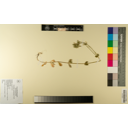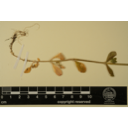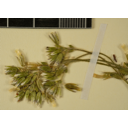Wissenswertes zum Taxon (Art, Unterart, Varietät...)
Cerastium glomeratum Thuill. 1799
Caryophyllaceae
- Nelkengewächse (APG IV)Knäuel-Hornkraut
Taxonkonzept: Schmeil-Fitschen 2019
Verbreitung: Europa, Nord-Afrika, Makaronesien bis nach Assam
Verbreitungskarte Bundesamt für Naturschutz BfN
Größe: 0,02 - 0,45 (m)
Blütezeit: III - IX
Cerastium glomeratum Thuill. - Accepted: Cerastium glomeratum Thuill. bei The Plant List (2014), version 1.1; Familie: Caryophyllaceae (APG III)Cerastium glomeratum Thuill. - Accepted: Cerastium glomeratum Thuill. bei The Plant List (2014), version 1.1; Familie: Caryophyllaceae (APG IV)Cerastium glomeratum Thuill. - Accepted: Cerastium glomeratum Thuill. bei Rothmaler 2017; Familie: Caryophyllaceae (APG IV)Cerastium glomeratum Thuill. - Accepted: Cerastium glomeratum Thuill. bei BfN Checklist Flora DE; Familie: Caryophyllaceae (APG IV)Cerastium glomeratum Thuill. - Accepted: Cerastium glomeratum Thuill. bei World Flora Online; Familie: Caryophyllaceae (APG IV)Cerastium glomeratum Thuill. - Accepted: Cerastium glomeratum Thuill. bei World Flora Online - APG IV (Angiosperms); Familie: Caryophyllaceae (World Flora Online - APG IV (Angiosperms))
- Blütenfarbe
- weiß
- Blüten
- Blüten in dicht geknäuelten Infloreszenzen, Staubfäden kahl
- Schutzstatus, Rote Liste
- Ungefährdet in DE (*)
- Lebensform
- krautig, ein- bis zweijährig
- Früchte
- Fruchtstiele kürzer als der Kelch
- Bodenbedingungen
- mäßig frische bis feuchte, nährstoffreiche, kalkarme, sandige oder reine Lehm- und Tonböden
- Natürliches Vorkommen (Habitat)
- in Ackerunkraut-Fluren, auch an Wegen und Schuttplätzen
- Kommentar zur Ökologie
- sandbevorzugend, etwas wärmeliebend
- Vegetationstypus und Synökologie (Pflanzengesellschaft)
- Ver. Fumario-Euphorbion
- Status der Einbürgerung
- I
- Blütenbesuch durch oligolektische Wildbienen
- Andrena labialis
- Blütenbesuch durch polylektische Wildbienen
- Andrena flavipes, Andrena gravida, Rotfransige Sandbiene (Andrena haemorrhoa), Andrena nigroaenea, Andrena nitida, Andrena thoracica Steinhummel (Bombus lapidarius), Ackerhummel (Bombus pascuorum), Dunkle Erdhummel (Bombus terrestris), Gelbbindige Furchenbiene (Halictus scabiosae), Halictus simplex, Gewöhnliche Furchenbiene (Halictus tumulorum), Pförtner-Schmalbiene (Lasioglossum malachurum) und Lasioglossum pauxillum
Kämper, Wiebke et al. (2018): Flower visitation honeybee and bumblebee. See: https://www.bexis.uni-jena.de/ddm/data/Showdata/16086?version=2; Oberdorfer, E. (2001): Pflanzensoziologische Exkursionsflora. Für Deutschland und angrenzende Gebiete. Eugen Ulmer Verlag, Stuttgart, 8., stark überarb. u. erg. Aufl, 1056 S. 978-3-8001-3131-0.; Parolly, G. et al. (2019): Schmeil-Fitschen: Die Flora Deutschlands und angrenzender Länder.. Quelle & Meyer Verlag, Wiebelsheim, 97. Aufl.; The International Plant Names Index (2009). Published on the Internet http://www.ipni.org; Courtesy to IPNI, 2009. Exported from IPNI at date: 2009-09-22 20:17:51; Werle, Susanne et al. (2015): ITS2 DNA metabarcoding of wild bee pollen loads, collected in 2020 and 2021 across all three exploratories. See: https://www.bexis.uni-jena.de/ddm/data/Showdata/31545?version=6;
Diese Webseite verwendet Google Maps, um Karten und Standorte von Pflanzen in den Hohenheimer Gärten anzuzeigen. Dadurch werden unter Umständen Daten an Google weitergeleitet, was mit einer Verarbeitung Ihrer personenbezogenen Daten verbunden sein kann. Die Datenschutzerklärung von Google finden Sie hier: Datenschutzerklärung von Google
| Fundort | Datum (ISO) | Sammler oder Beobachter | Lat. | Long. | Projekt |
|---|---|---|---|---|---|
| Hohenheimer Gärten – Schlosspark | 2021-06-02 | Nathalie Hund | 48,71099 | 9,21439 | Bachelorarbeit |
| Hohenheimer Gärten – Schlosspark | 2021-06-02 | Nathalie Hund | 48,71102 | 9,21493 | Bachelorarbeit |
| Hohenheimer Gärten – Schlosspark | 2021-06-02 | Nathalie Hund | 48,71103 | 9,21501 | Bachelorarbeit |
| Hohenheimer Gärten – Schlosspark | 2021-06-02 | Nathalie Hund | 48,71109 | 9,21509 | Bachelorarbeit |
| Hohenheimer Gärten – Schlosspark | 2021-06-02 | Nathalie Hund | 48,71104 | 9,21523 | Bachelorarbeit |



